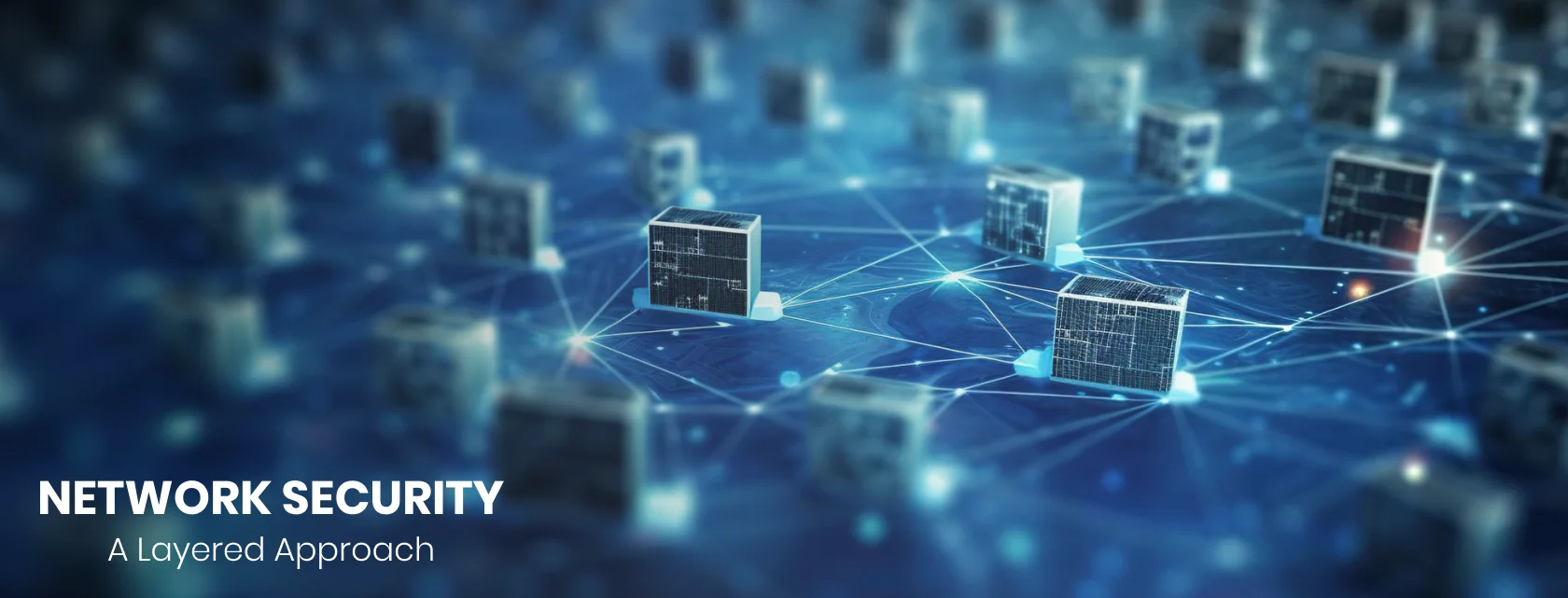In today’s digitally connected world, understanding network security fundamentals is crucial for safeguarding sensitive information and preventing cyber threats.
With businesses and individuals increasingly relying on computer networks for communication, financial transactions, and data storage, protecting these systems has never been more important.
In this article, we’ll explore network security fundamentals, and how to protect data and prevent cyber threats.
This network security tutorial will provide valuable insights whether you’re a beginner looking for an introduction to network security or an IT professional seeking to strengthen your security protocols.
Network Security Fundamentals: (Brief Overview)
- Understand the basics of network security and why it’s crucial for data protection.
- Learn about firewalls, intrusion detection systems, encryption, VPNs, and access control.
- Discover how a multi-layered defense system ensures comprehensive protection against cyber threats.
- Explore key strategies like regular updates, employee training, and regular security audits.
- Understand the role of network security in safeguarding sensitive information from unauthorized access and cyber-attacks.
- Get insights into effective tools and methods for securing networks in computer and IT environments.
Understanding the Basics of Network Security

At its core, network security involves implementing measures to protect the integrity, confidentiality, and availability of data and resources within a network. Computer network security ensures that information traveling across a network is shielded from unauthorized access, corruption, or theft. Effective network security relies on a layered approach, combining both hardware and software tools to defend against malicious attacks.
Network security basics typically include tools such as firewalls, antivirus software, encryption techniques, intrusion detection systems (IDS), and intrusion prevention systems (IPS). These technologies work together to create a robust security infrastructure that protects against cyber threats, ranging from simple malware attacks to complex data breaches.
The Importance of Network Security in a Digital World
As more businesses and individuals store valuable data online and conduct financial transactions through digital channels, the need for strong security for networks has increased exponentially. Cybercriminals are constantly developing new techniques to exploit vulnerabilities in network systems, and the consequences of a security breach can be devastating.
Without proper network security in computer networks, sensitive information like personal identification details, financial records, and business-critical data are at risk. The impact of a breach can range from financial losses and reputational damage to legal consequences. In some cases, companies may even be forced to shut down operations temporarily or permanently.
This makes understanding and implementing the fundamentals of network security essential for any organization that relies on a computer network for day-to-day operations. But network security isn’t just for businesses; individuals also need to be aware of the risks and take steps to protect their data online.
Core Components of Network Security

1. Firewalls: The First Line of Defense
A firewall is a security system that monitors and controls incoming and outgoing network traffic based on predetermined security rules. It acts as a barrier between a trusted internal network and untrusted external networks, such as the internet. Firewalls help to filter malicious traffic and ensure that only authorized users can access the network.
There are two types of firewalls:
- Hardware firewalls: Dedicated physical devices that protect the network perimeter.
- Software firewalls: Installed on individual computers to control access to the network.
2. Intrusion Detection and Prevention Systems (IDPS)
Intrusion Detection Systems (IDS) and Intrusion Prevention Systems (IPS) play a vital role in identifying and responding to suspicious activity within a network. IDS monitors traffic for signs of known threats, such as viruses or unauthorized access attempts, and alerts network administrators. On the other hand, IPS not only detects threats but can actively block malicious activities in real time.
Both systems work by analyzing network traffic patterns and matching them to known attack signatures or anomalies that indicate potential threats.
If you want to learn more about prevention systems, subscribe to the Networking security course on FastLearner, an AI-powered learning platform.
3. Encryption: Protecting Data in Transit
Encryption is a process that converts data into a coded format to prevent unauthorized access. It is a critical aspect of network security in computer networks, especially when data is transmitted over the internet or between network nodes.
Encryption ensures that even if cybercriminals intercept the data, they cannot read it without the proper decryption key. Secure protocols like HTTPS (Hypertext Transfer Protocol Secure) and VPNs (Virtual Private Networks) leverage encryption to protect sensitive data while it is in transit.
4. Virtual Private Networks (VPNs)
A VPN is a secure tunnel that encrypts internet traffic, allowing users to access networks remotely while ensuring their data remains private. VPNs are especially useful for businesses with remote employees or individuals who want to protect their privacy when using public Wi-Fi networks. VPNs enhance security for networks by masking the user’s IP address and encrypting communication.
5. Access Control and Authentication
resources. Authentication methods, such as usernames and passwords, multi-factor authentication (MFA), and biometric identification, strengthen the security of networks by verifying the identity of users.
By implementing robust authentication practices, organizations can reduce the risk of unauthorized access and ensure that only trusted users are granted access to critical systems.
Network Security in Computer Networks: A Layered Approach

A successful strategy for securing computer and network security must involve multiple layers of protection. Known as the “defense-in-depth” strategy, this approach ensures that if one security measure fails, others remain in place to prevent or mitigate attacks.
For example, even if a firewall is breached, an intrusion detection system can identify malicious activity and alert administrators. Similarly, encrypted data can provide an additional layer of protection, ensuring that even if an attacker gains access to the network, they will be unable to read the data.
1. Physical Security
Physical security measures are the first line of defense against unauthorized access to network devices, servers, and routers. Properly securing data centers, workstations, and networking equipment ensures that physical intruders cannot easily access the network infrastructure.
2. Network Segmentation
Network segmentation involves dividing a larger network into smaller, isolated segments to limit the spread of potential attacks. By creating isolated zones, businesses can restrict access to sensitive information and minimize the damage caused by a breach.
Best Practices for Enhancing Network Security

To further enhance network security, organizations, and individuals should adopt these best practices:
- Regularly update and patch software to address vulnerabilities.
- Train employees on the risks of phishing and social engineering attacks.
- Implement least privilege access policies to minimize unnecessary permissions.
- Monitor network activity for signs of suspicious behavior.
- Conduct regular security audits and penetration testing to identify weaknesses.
Conclusion - Network Security Fundamentals
Network security fundamentals are critical for ensuring that sensitive data is protected and cyber threats are prevented.
By understanding the network security fundamentals, and how to protect data and prevent cyber threats by implementing best practices, individuals and organizations can build a robust defense system against malicious attacks.
The fundamentals of network security cover a wide range of techniques and tools, including firewalls, encryption, VPNs, and intrusion detection systems. With the right strategies in place, you can keep your network safe and your data secure.
If you’re looking to dive deeper into the world of network security, our network security tutorial offers additional insights into best practices and advanced protection strategies.
Whether you’re managing a corporate network or just protecting your devices, network security in a computer network is an ongoing process that requires vigilance, expertise, and a proactive approach.
By staying informed and implementing security measures effectively, you can ensure the safety of your data and minimize the risks of cyber threats.
FAQs About Network security fundamentals
What are the fundamentals of security in cybersecurity?
The fundamentals of cybersecurity include protecting the confidentiality, integrity, and availability of data through measures like encryption, firewalls, intrusion detection systems, access control, and regular security audits.
How will you protect your data and information from cybersecurity threats?
To protect data, you can implement strong encryption, use firewalls and VPNs, adopt multi-factor authentication, regularly update software, and train employees to recognize threats like phishing and social engineering.
What is the fundamental principle of network security?
The fundamental principle of network security is to protect the integrity, confidentiality, and availability of data by controlling access to the network, monitoring for threats, and preventing unauthorized access.
How does network security protect data?
Network security protects data by using tools like firewalls, encryption, and intrusion detection systems to prevent unauthorized access, ensure secure data transmission, and block potential cyber threats from compromising sensitive information.



